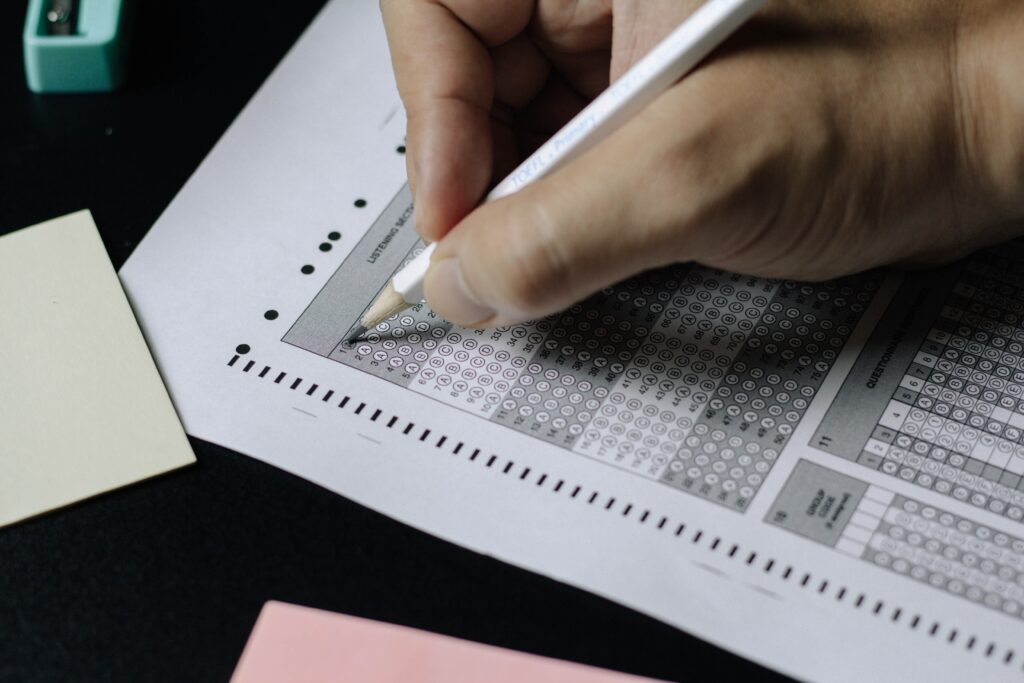
Students preparing for PSLE English should be aware of the papers they will encounter, what to expect, and the weight of each paper in the final score. This way, when they go into the exam room, they know what percentage they are likely to lose if they make avoidable mistakes.
PSLE is the first major competitive exam that students take, and it sets the stage for future exams. Unlike Mathematics and Science where answers are either correct or not, English is intuitive. There are basic rules on grammar, vocabulary, and punctuation.
However, how you score will depend on how you interpret the question. You will encounter questions whose answers are all correct, but one is more correct than the others. These questions test a student’s critical thinking and analytical skills.
A student who wants to score AL1 (the highest score) should get at least 180 marks out of the possible 200. Understanding the different English PSLE papers, the scoring system, and the student’s strengths and weaknesses is critical because English tuition arrangements can also be made based on the parents’ expectations.
English Paper 1: Composition Writing
Time: 70 minutes.
Testing: Situational writing (15 marks)
Continuous writing (40 marks)
In situational writing, students are required to write a short letter, email, or report based on a given situation. This is a functional letter that has to fit a specific context. The paper tests the student’s ability to understand the situation, the target audience, and the context of the writing.
In continuous writing, the student is required to write a continuous prose of at least 150 words. The topic is given, and the student is required to focus on creative writing. PSLE English tuition will help students focus on areas the examiner will focus on when marking the paper.
Issues such as grammar, punctuation, creativity, and the ability to stick to the context.
The weight of this paper is 27.5% of the overall English PSLE mark. It may not seem like much, but it is also one of the most flexible English PSLE papers. Students can score the full mark or as close to the full mark as possible, based on the quality of the composition.
English Paper 2: Language & Comprehension
Time: 1 hour, 50 minutes.
Score: Booklet A (28 marks)
Booklet B (67 marks)
Weightage: 47.5%
Compared to English Paper 1, this paper carries more weight because the marks represent 47.5% of the total PSLE English score. While students need to aim to perform well on all papers, they should pay close attention to papers with a higher score possibility.
This paper tests a student’s vocabulary, grammar, and comprehension. At the English tuition centre, tutors help students compartmentalise questions and keep the answers simple.
English Paper 3: Listening Comprehension
Time: 35 minutes.
Score: 20 marks.
Weightage: 10%
In this paper, students are exposed to different spoken texts, followed by questions that test their listening comprehension. The paper takes a short time, and it carries the lowest weightage in the PSLE English exam. It may not appear to be as important as the other papers, but it is easy to get the top score if the student is keen.
There are several multiple-choice questions with answers that are closely related. Students who are keen on the texts will easily pick the right answers. It is also easy to pick the wrong answer if one has poor comprehension skills.
English tutors use different mediums (television, audiobooks, and radio) to expose students to devices that will test their listening comprehension and their ability to interpret and answer questions correctly.
English Paper 4: Oral Communication
Time: 10 minutes.
Score: 20 marks.
Weightage: 15%
This is another short but intense PSLE English session. Students are required to read aloud and interpret diagrams correctly. It seeks to test spoken English, tome, and pronunciation. Tutors will expose students to scenarios that will test their ability to convey different emotions using descriptive words and different tones.
PSLE English tests different areas, and preparation is key. The scores are divided across the different papers, and a student who is adequately prepared can easily get a high score on all the papers.
